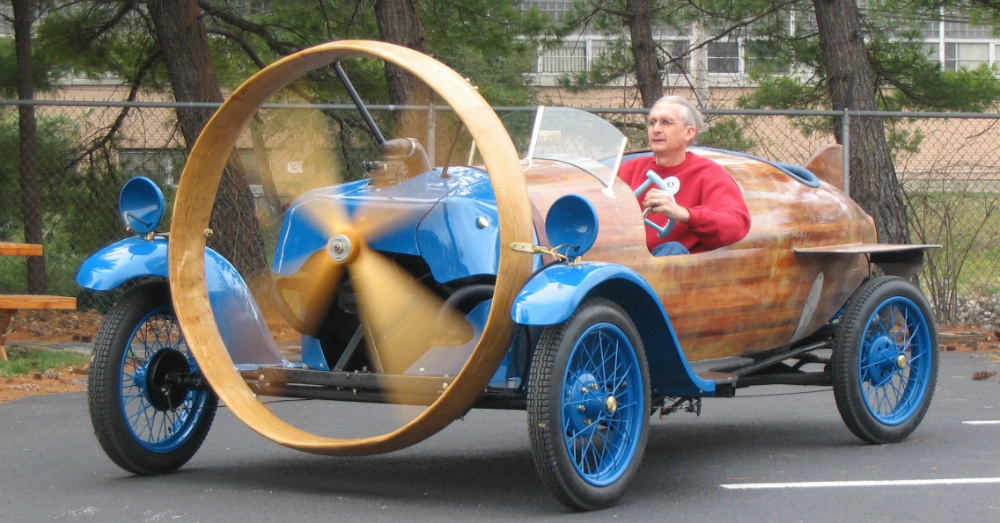The best way for a car to turn energy into motion by powering the wheels has been a hotly debated topic for many years. Over those years many different companies have toyed with the idea of different forms of fuel, types of engines and even power. While we applaud Tesla for their electric battery powered systems and wonder if Toyota will be able to make hydrogen a mainstream option, we can take a look back at a design that was attempted several years ago which simply never quite took off.
This design was of a car that had a large propeller on the front and ran power to the rear wheels. With the power up front and a propeller driven engine that could turn a pedestrian into mulch in an instant this design for this type of car created a lot of challenges that couldn’t quite ever be met. Not only did this design offer a great deal of safety issues but it was awful to drive and ended up being a design that would be left behind for greener pastures of the internal combustion engine that has been the power we use and have used for many years.
The car that used this propeller design was the 1932 Helicron and it used a Rosengard chassis that has been flipped around backwards to give the car rear-wheel drive. The front of the car has been widened and to allow room for the propeller to power the vehicle. The thought behind this design was to have the propeller move the air around the vehicle to push the air backwards and move the car forwards. This is how prop driven planes fly, which seems like it could be a direct thought to making a car move, but it wasn’t a good idea at all.
Not only does the Helicron appear to be a propeller driven airplane that has the wings removed, it’s a car that has to be pushed to get started and even has the emergency brake on the outside of the car where you would use it if you in fact were pushing. As you can see from this video, the car requires you to push and then jump in when you move the accelerator lever forward. This makes the starting and moving of this car one that seems dangerous at best.
Another problem with this car is the fact that the large propeller is pulling the car along and the rear end is left behind with no control or feel of the road. The turning of the car feels like a drift that is barely under control.
Advantages of this style of power are a lack of a complicated transmission, and an easy way to get the power to the wheels. The tires aren’t going to wear out as easily and the complications are gone. The fact is this design was one that wasn’t going to work at all but showed a thought process that made some sense and could have given us a simplified way of engine design, although we might have more deaths by propeller than we would be comfortable with.
This post may contain affiliate links. Meaning a commission is given should you decide to make a purchase through these links, at no cost to you. All products shown are researched and tested to give an accurate review for you.

